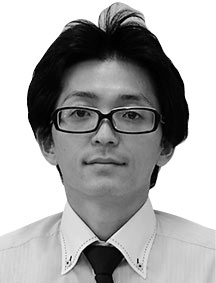Digital Twin Technology for Continuous Improvement at Manufacturing SitesCreating a Factory IoT Platform
Highlight
The digital twin concept is attracting interest in the manufacturing industry. A digital twin is a replica of the real world created in a digital space by bringing together many different types of on-site data. The replica can be used with AI or simulations to help make on-site improvements. Lumada’s Digital Innovation Platform will play an important role in creating digital twins. The platform collects, refines, and stores vast amounts of data generated from production sites. It organizes and integrates the stored data, and then provides it to AI or other applications. This article provides an overview of a Hitachi factory IoT platform that helps create digital twin solutions for production sites. Two of its components are briefly described. One is Hitachi Data Hub, a solution that sequentially links data from the site while collecting, refining, and storing it. The other is a Hitachi digital twin solution that cross-links stored data while organizing and integrating them.

Introduction
The rise of information and communication technology (ICT) is creating hopes for a digital transformation (DX) that will make everyday life better in a variety of ways. An essential requirement for bringing DX to life will be to harness today’s evolving digital technologies such as the Internet of Things (IoT), artificial intelligence (AI), and big data usage. The key here will be creating digital twins—digital replicas of the real world that can easily be used by AI and other applications. Digital twins are created by bringing together different digital technologies to enable vast amounts of IoT-generated data to be collected, refined, and stored. The stored data is then organized and integrated.
Hitachi provides digital twin solutions that enable continuous improvement at manufacturing sites. This article gives an overview of the technical aspects of two of these solutions. One is Hitachi Data Hub, a solution that sequentially links data from the site while collecting, refining, and storing it. The other is a Hitachi digital twin solution that cross-links stored data while organizing and integrating them.
Hitachi Data Hub: A Platform for Collecting, Refining, and Storing Data
Sequentially Linking Various Types of Site Data to Step up Data Usage
The IoT era has seen explosive growth in Internet-connected devices(1), and IoT technology applications are gaining momentum in the manufacturing industry. These applications collect large volumes of data, and several different ways of using them are being studied and implemented. Examples include production equipment monitoring and control, product quality control, employee work management, traceability and process optimization(2). Companies adopting IoT applications are trying to find out how IoT can innovate their businesses by studying it carefully through trial-and-error, so they need to rapidly create low-cost prototypes.
Hitachi has responded to this need by developing Hitachi Data Hub, a platform for collecting, refining, and storing data from a variety of sites in real time. Its main functions are as follows:
- Data collecting: Collects data from devices such as gateway equipment, programmable logic controllers (PLCs), and outside systems.
- Data refining: Uses data transformation logic such as binary text conversion to efficiently transform data to absorb the differences found among various different data formats.
- Data storing: Stores the collected/refined data in a data lake in real time, enabling rapid feedback of data analysis results to the site.
Benefits of Hitachi Data Hub
The configuration of Hitachi Data Hub is shown in Figure 1. Hitachi Data Hub is composed of seven different function components, along with adapters (client software installed in devices).
The Connector function component collects data from operational technology (OT) and IT devices. Data Transformer transforms the data as specified by the data transformation logic, absorbing the differences found among various different data formats. Data Loader stores the transformed data in a data lake. Visualization provides simple display functions for the transformed data, while Management provides management functions for the other components.
Hitachi Data Hub’s benefits include real-time operation and scalability. For example, the Connector, Data Transformer, and Data Loader components that handle data generated at the site create a good balance between these benefits by using serial processing and loosely coupled architecture. Hitachi Data Hub’s open source software (OSS) configuration and use of the Lumada concept are other benefits. Lumada is designed to create platforms enabling open collaborative creation.
A major benefit of Hitachi Data Hub is its ability to design data flows without programming work. Data flows specify where to collect the data from, how to refine it, and where to store it. The programming work previously needed to design data flows was a drawback that Hitachi Data Hub had overcome by using the tool shown in Figure 2 called Data Flow Manager. The tool enables flows to be designed visually by moving parts around. Specifically, a flow consists of the following operations: First, a data ID to use for the data extraction is specified, then a data filter corresponding to the process to perform is selected, and lastly the data is stored in a blockchain.
Hitachi Data Hub is designed to run in various infrastructure and cloud environments, and supports Docker*1 (an industry-standard container technology) and Kubernetes*2 (a container orchestration platform). To increase scalability and deployment portability for these technologies also, its design carefully considers the data management methods needed to preserve container states. Its deployment portability is designed for environments ranging from multi-cloud to on-premises types.
- *1
- Docker is a trademark or registered trademark of Docker, Inc. in the United States and other countries.
- *2
- Kubernetes is a trademark or registered trademark of The Linux Foundation in the United States and other countries.
Hitachi Digital Twin Solution for Production Site Visualization and Analysis
Cross-linked Data Analysis, and Shift from Individual to Overall Optimization
The business activities of industries such as logistics, construction, and manufacturing take shape by carrying out a predetermined sequence of operations organized by function. The result of each operation is then successively passed along to each subsequent operation. In this way, freight is transported (logistics), buildings are built (construction), and products are manufactured (manufacturing). The operations done to carry out these activities have been made more efficient by digitalization, but further efficiency gains are needed to satisfy today’s increasingly diverse market demands.
Instead of focusing only on improving the efficiency of individual operations, the key to creating these efficiency gains is to optimize the operation flow of the entire value chain by considering the links between the wide range of operations comprising each business activity. However, optimizing an entire operation flow requires a framework that can bring together and comprehensively manage a vast amount of heterogeneous data generated by different operation systems.
And, in the manufacturing industry for example, production operations such as pressing, painting, and assembly are connected in the form of production lines. Systems for production operations are usually optimized for the operation they perform, and are each built as a separate system.
Hitachi has taken a close look at these sorts of manufacturing industry issues and responded by developing a digital twin solution that addresses them. The solution brings together many different types of site data from the operations spread throughout a factory. It recreates the entire production line in a digital space, and helps display and analyze factory-related, product-related, and other physical-world events in a simulation space that models the real world(3). In addition to manufacturers with factories, the Hitachi digital twin solution can also be used by companies in other industries that have standardized operation flows resembling production lines.
Function Overview of the Hitachi Digital Twin Solution
Fig. 3—Overview of Hitachi Digital Twin Solution  The Hitachi digital twin solution models site data and stores them in graph databases by using the relationships between operations, and between operations and operation-related workers, equipment, materials, and methods/procedures.
The Hitachi digital twin solution models site data and stores them in graph databases by using the relationships between operations, and between operations and operation-related workers, equipment, materials, and methods/procedures.
The Hitachi digital twin solution is a data usage platform that makes it easy to bring together and prepare OT/IT data saved individually by many different operations. It helps make continuous productivity improvements through AI analysis and simulations (see Figure 3). This platform uses the links between production operations to model site data. Specifically, it defines elements such as production operations, production operation-related workers, equipment, materials, and written operation procedures in terms of the Hitachi resource management elements of man, machine, material and method (4M). It also uses its own data model that reproduces the links to the previous and subsequent production operations for processed items manufactured in production processes (the material element).
Modeled site data is stored in graph databases*3, enabling site data for each production operation to be extracted for each finished product. This feature makes it possible to associate and view specific information for each finished product—namely, the production operations performed, the equipment used by those operations, and the processes carried out. The Hitachi digital twin solution makes it easy to extract and integrate the required data whenever needed, without expert knowledge of production operations. It helps speed up the plan-do-check-act (PDCA) cycle for data analysis.
- *3
- Databases that store and display data in graph structures using nodes and their connection lines.
Hitachi Data Hub and Digital Twin Solution Application Example
Fig. 4—Architecture of Hitachi Factory IoT Platform  Hitachi Data Hub collects and refines many different types of data generated at the production site, and stores them in a data lake. The Hitachi digital twin solution integrates the stored data for all the manufacturing processes, and then provides the data to analysis applications such as AI and simulations.
Hitachi Data Hub collects and refines many different types of data generated at the production site, and stores them in a data lake. The Hitachi digital twin solution integrates the stored data for all the manufacturing processes, and then provides the data to analysis applications such as AI and simulations.
Bringing about an IoT-based DX in the manufacturing industry will require comprehensive coverage spanning manufacturing sites and analysis applications. Hitachi has responded by creating a factory IoT platform in the form of Lumada’s Digital Innovation Platform for the manufacturing industry. This platform collects, refines, organizes, and integrates massive amounts of data generated from production sites, and then provides it to analysis applications. Figure 4 shows the factory IoT platform’s architecture. Hitachi Data Hub and the Hitachi digital twin solution presented in earlier sections are the products that form the core of the factory IoT platform. Hitachi will use the factory IoT platform to provide digital twin solutions for production sites, to sequentially- and cross-link site data for manufacturing processes, to provide data for analysis applications such as AI and simulations, and to help improve manufacturing sites using the stored data.
Conclusions
This article has looked at digital twin solutions that enable continuous improvement at manufacturing sites. It has provided an overview of the Hitachi factory IoT platform, Lumada’s Digital Innovation Platform that helps make site improvements using AI and simulations. It has also briefly described its main components, Hitachi Data Hub and the Hitachi digital twin solution.
To help make continuous productivity improvements designed for overall optimization, Hitachi will use these technologies to create links that span entire production processes and connect production sites to applications driven by the latest AI technologies.
REFERENCES
- 1)
- M. Chiang et al., “Fog and IoT: An Overview of Research Opportunities,” IEEE Internet of Things Journal, Vol. 63 Iss. 6, pp. 854–864 (Dec. 2016).
- 2)
- X. Xu et al., “Industrial Big Data Analysis in Smart Factory: Current Status and Research Strategies,” IEEE Access, 5, pp. 17543–17551 (Aug. 2017).
- 3)
- Hitachi News Release, “Commenced Sales of ‘Digital Twin Solution’ that Facilitates Data Linkage at Production Sites Using Unique Data Model and Supports Optimization of the Entire Production Process” (Oct. 2018) in Japanese






